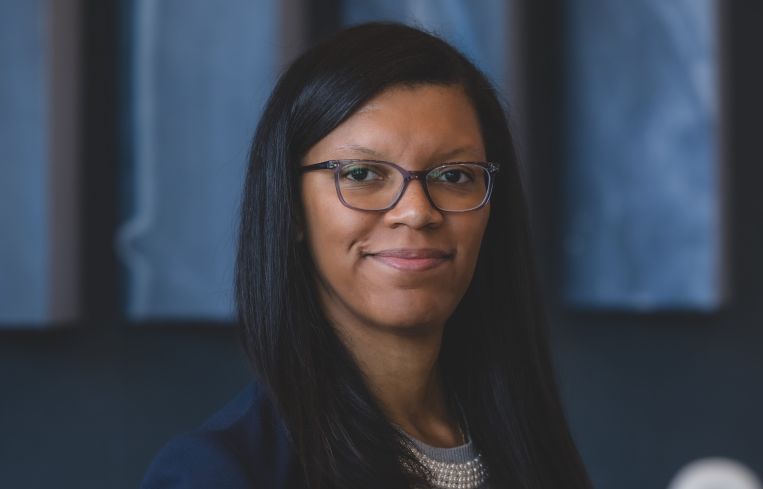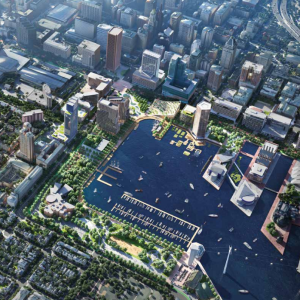MCB Real Estate’s Gina Baker Chambers On Building Retail Where People Live
CO caught up with Baker Chambers at ICSC Las Vegas on her development and investment firm’s retail strategy, market realities in the DMV, and more
By Nick Trombola May 20, 2025 8:00 pm
reprints
After 14 years in the equity and debt investments space, Gina Baker Chambers wanted to help a specific firm scale.
As one of the first employees to join Artemis Real Estate Partners in its founding year, she helped the women-led investment firm grow from effectively zero to $10 billion in equity throughout her tenure. But that work led her to find MCB Real Estate, which she said had the right ingredients to balloon in size.
MCB currently owns, operates and manages 17 million square feet of real estate assets, particularly along the East Coast, totaling some $3 billion in value. The firm also has over 4 million square feet under construction, including large master-planned projects such as Harborplace, in its hometown of Baltimore, and Viva White Oak, not far from the northern border of Washington, D.C.
Baker Chambers, who joined MCB as its president in 2023, sat down with Commercial Observer at ICSC in Las Vegas to talk about retail market fundamentals in the DMV, the firm’s retail strategy at its master-planned districts, and building retail spaces where people live rather than where they work.
This interview has been edited for length and clarity.
Commercial Observer: MCB is based in Baltimore, so let’s talk about the Mid-Atlantic region. Particularly, the market realities in both Baltimore and Washington, D.C., which obviously have had their fair share of troubles lately.
Baker Chambers: We are Baltimore based, so we remain bullish on Baltimore. We like to think, and a lot of people say this, but it’s true, Baltimore is a collection of neighborhoods. While we have some high-profile projects such as Harborplace, we have other things that are just in neighborhoods throughout the city, redeveloping sites that haven’t received investment in a very long time. And I think it’s making an impact on the way people feel about the city. Baltimore also has the Johns Hopkins medical school and large law schools, so we’re attracting new, younger residents.
I think D.C. proper is a challenging market right now on all fronts, retail, multifamily and office. Some of that is political, but some of that is not even federal-political. It’s some of the decisions that the local government has made, which is not making it as attractive to invest there right now. And I think they’re recognizing that and trying to unwind some of that.
Northern Virginia is super strong, so we’re actively looking at Northern Virginia. So, I’m bullish on the DMV overall, but I would say it’s probably Northern Virginia first, Maryland second. And I’d say D.C. proper is not really on our radar at the moment, but we’re opportunistic buyers and investors.

Tell me about MCB’s retail strategy, particularly at the big master-planned projects like Harborplace and Viva White Oak.
Those two are going to be two very different situations. Harborplace is not going to be a grocery retail strategy, for example. It’s really going to be an experiential retail strategy, because we want that to be a destination location. We don’t have an anchor yet, but are certainly talking to those restaurant groups that are known for anchoring hospitality, experiential-driven locations.
Viva White oak is very different. That’s going to be much more of a community, a true master-planned community that needs a grocery anchor to really survive. And so that one is a space where we’re looking at a big box, we’re looking at a grocer, and then we’re looking at what kind of experiential retail is going to be attractive to the thousands of residents that are going to be living there. It’s going to be a mix of multifamily and single-family residential, and so you want to be thoughtful about the income mix, knowing who your target audience will be.
Retail has had this really remarkable comeback over the past few years, at least in part because there’s been a broader definition of what retail real estate can be — property types like experiential or medical spaces. It sounds like MCB is really leaning into that.
I have two examples of that, still in Maryland. One is called Foundry Row (in Owings Mills, Md.), which we actually own in partnership with another operator, and that is anchored by a Wegmans. But to your point, it’s got that medical office component into it, so it’s like med-tail.
And then we have another one called Yard 56, it’s a redevelopment of an old brownfield site in Baltimore, across from the Johns Hopkins Bayview campus. That one is grocery-anchored by a regional grocer. It has an apartment building, and it has a medical office building. [Proximity of Yard 56 to Hopkins benefits] some of that medical office tenancy. So that combination of medical office, retail and multifamily seems to be taking flight right now, especially when you look at what’s happening in traditional office. [Traditional office] used to be part of that mixed-use, but it’s not really anymore. Now it’s, how do we make it more functional? And I think medical office is a space where we’re seeing the demographics make a lot of sense, especially with an aging population.
Because retail is doing so well right now and office is not, is that informing how you’re building out these communities? Especially because there’s limited supply of retail space right now, and demand is so high, does that make you more inclined to build more retail in these spaces where maybe you wouldn’t have five years ago?
It is, and it’s making me more inclined to build retail where people live, versus where people work. You used to see a lot of businesses thriving in [central business districts (CBDs)] simply because there were office workers there, particularly during the day. And I think [retail space around CBDs] has struggled quite a bit and hasn’t fully recovered. But if you’re locating where people are living, you’re getting much more traffic, even with return-to-office mandates. So I think you’re going to see solid traffic trends closer to where people live.
We’re actually building new retail in Charles County, Md., which is a suburb of D.C., and that’s another that’s a Weis-anchored shopping center, and it will be adjacent to new residential as well, two-over-two condos. So again, it’s about making sure that we’ve got the ready made residence to support the retail.
There was talk earlier this year of retailers maybe pausing some expansion plans as they waited to see the impact of uncertain economic conditions, tariffs being chief among them. But have you been seeing that from a landlord’s perspective?
I’d say this; will there be more bankruptcies? I’m sure there will be. But there’s bankruptcies every year. And there are retailers ready to take that space because there is such tight supply in many markets.
I appreciate that there are a lot of big retailers who are probably suspending guidance for the balance of the year. Home Depot just said that they’re going to hold their full guidance, even though they missed Q1. So I think you’re going to see a good percentage of retailers probably doing that, too, anticipating a busier season in the summer, and then obviously with the winter holidays.
But that being said, we don’t have a lot of vacancy right now. And for the big boxes that have gone dark in the past couple of years, there’s been a Burlington to fill a Bed Bath and Beyond, for example. I think we only had two Big Lots, and we’ve been able to backfill those pretty quickly. (Big Lots filed for bankruptcy late last year).
So, people want space, particularly if you’ve got the right traffic and the right incomes.
Nick Trombola can be reached at ntrombola@commercialobserver.com.
Update: This article has been updated to clarify Johns Hopkins’ proximity to Yard 56.



